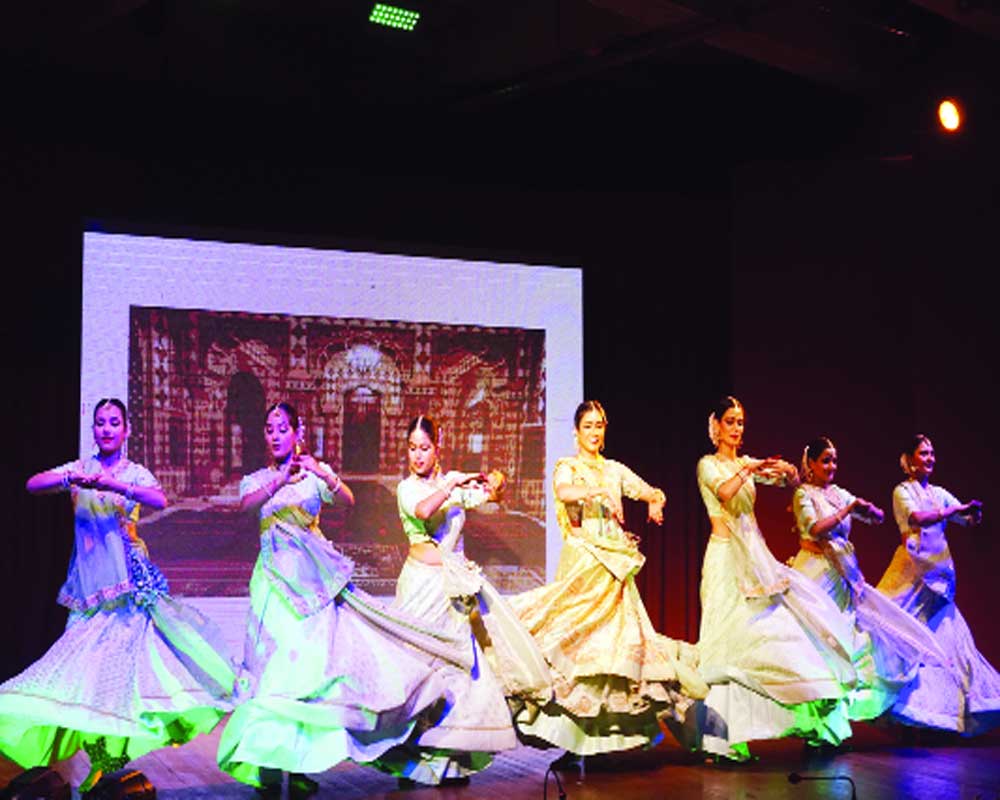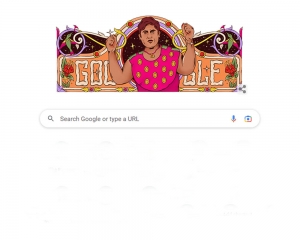Designers Asha and Gautam showcased their new collection, not through a fashion show, but a performance by Kathak impresario Shovana Narayan. The dancer tells Chahak Mittal how collaborations highlight different art forms under one roof in equal light
Typically, a designer’s new collection is showcased through a fashion show where models catwalk the ramp wearing the designer ensembles. However, have you ever heard of dancers and artists donning those outfits and performing on stage? Designers Asha Gupta and Gautam Gupta of Asha Gautam label, in a first-of-its-kind concept, launched their new collection, Noor Jehan, through a classical dance performance, performed and choreographed by Kathak impresario Shovana Narayan, with the queen as their muse.
Weaving a story of love, the Kathak performance saw the journey of Nur Jahan to becoming the favourite wife of Mughal emperor Jahangir. It showcased how she devoted her entire life to loving the Emperor and how that became a special episode in history. Lovingly and commonly known as Nur Mahal, (light of the palace), she epitomised grace, beauty, generosity and intelligence. And as Narayan said that for her, Nur Jahan was “a symbol for beautiful, smart and well-educated woman, who had a deep respect for culture. She was full of love and romance but more than that she was a lady with a personality. And not much is known about this but she was an administrator and had a sharp intellect and a good heart. As a person, she was impressive. History is evidence how various scholars have also seen her as a powerful person of her time.”
While the first part depicted her waiting to find the right person to fall in love with, the second showcased the time when she has finally found him and is rejoicing and indulging in shringaar with the other courtesans in the palace. The following part featured her as a bride who is all set to move to her beloved’s home. She was seen swinging through mixed emotions of happiness and also the pain of separation from her family and friends. The courtesans gather on one side as she parts from them during her Bidaai. The last part showcased the unveiling of Nur Jahan and her first night, where she is dancing on the tunes of love as she waits for her admirer. And ultimately, it dwelled on how her power is locked in the romance and love between her and Jahangir.
It was when Asha told Narayan about how they’re going to theme their collection based on their idea of Nur Jahan, when “their muse became my muse too. I was inspired by the inner beauty of her and decided to reflect that in my performance too. I was delighted to be a part of it.”
She added that when she learned about the designs and how they’ve been conceptualised, “a lot was going on in my mind about how the same level of emotions could be brought forth. However, Kathak is something that transcends the boundaries in art as it can bring forth the universality of human emotions, movements, rhythms and musical notes easily.”
So how do collaborations of two different art forms help? Doesn’t it limit the possibilities? To the contrary, however, she said, “Through collaborations, co-artists become more aware of different art forms. Here, they will realise the versatility and salient details of Kathak and how it can portray all kinds of emotions so beautifully. And shaadi ke baad bidaai toh honi hai (separation is imperative after marriage), so why not dance it away?” (laughs)
Gautam said that for the collection, rich textiles like paithani, bandhani, Banarasi silk, tissue, kota, organza and patloa were used “to give the collection a royal vibe.” There were vibrant colours such as bright rose, tomato red, radiant yellow, garden green, beetroot purple, red, rice gold to coriander brown. There was vintage zardozi embroidery, which was combined with pearls, ari and resham. “We have used peacock and flower motifs to signify the feeling of happiness in that moment,” he said. The golden zari lehengas had meenakari designs and were worn with heavily embellished blouses.
For him, Nur Jahan was “very much ahead” of her time. He said, “Our inspiration was her beauty, her love for fashion and jewellery, art, dance and music and above all, her kindness. History has always glorified the love story of Salim and Anarkali which overshadowed the one of Nur Jahan and Jahangir. We have woven music, jewellery and florals with her wedding and its celebration to narrate her inspiring story of power, love and beauty.”


























